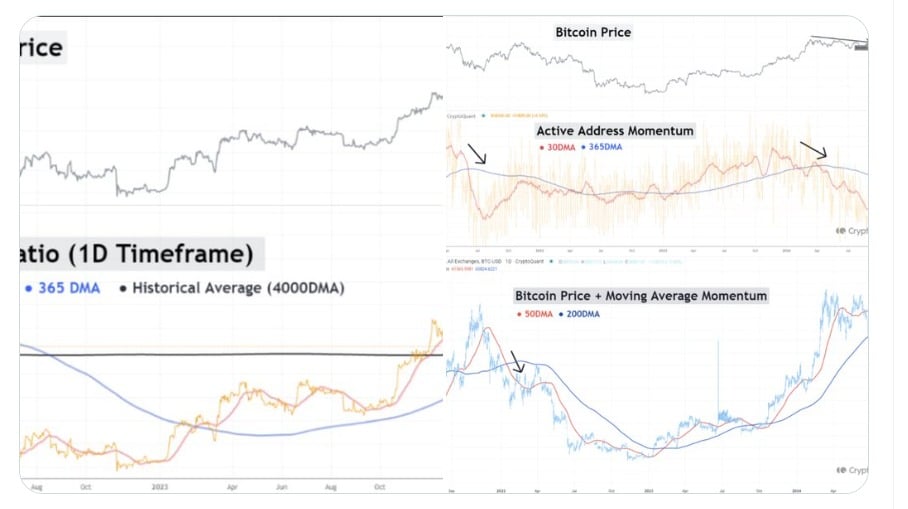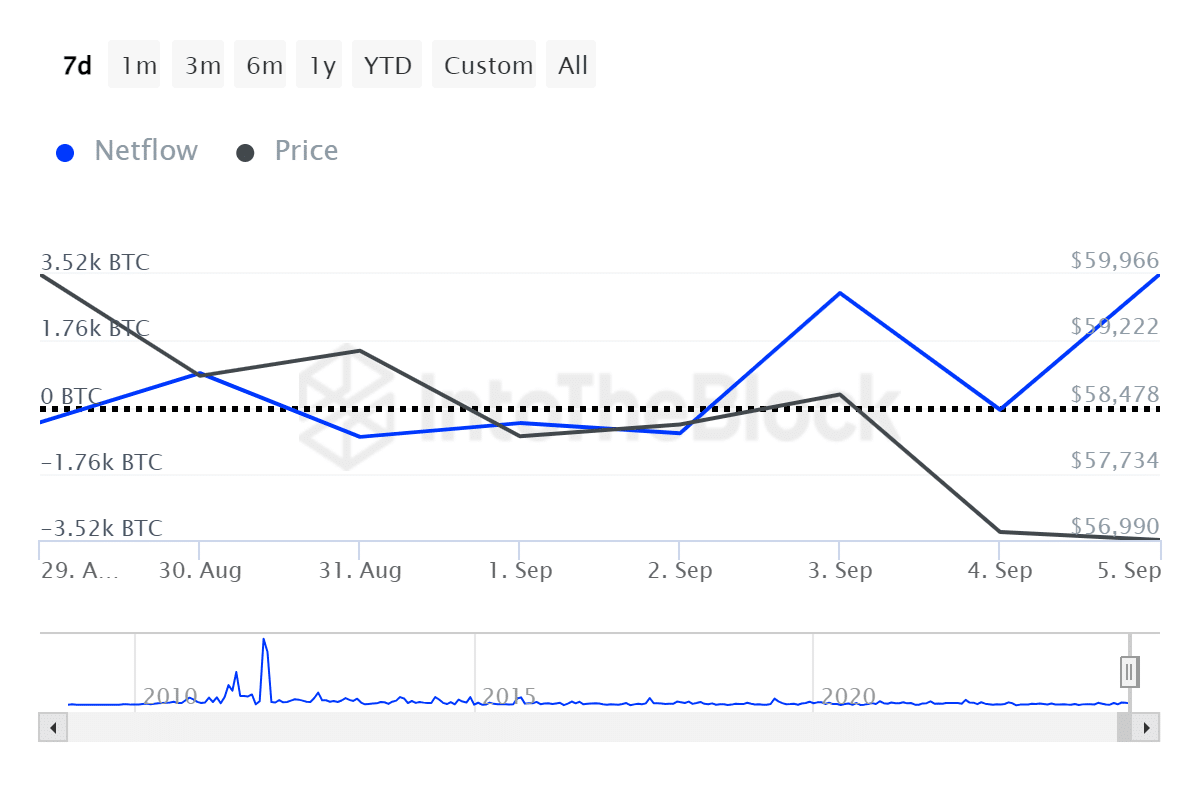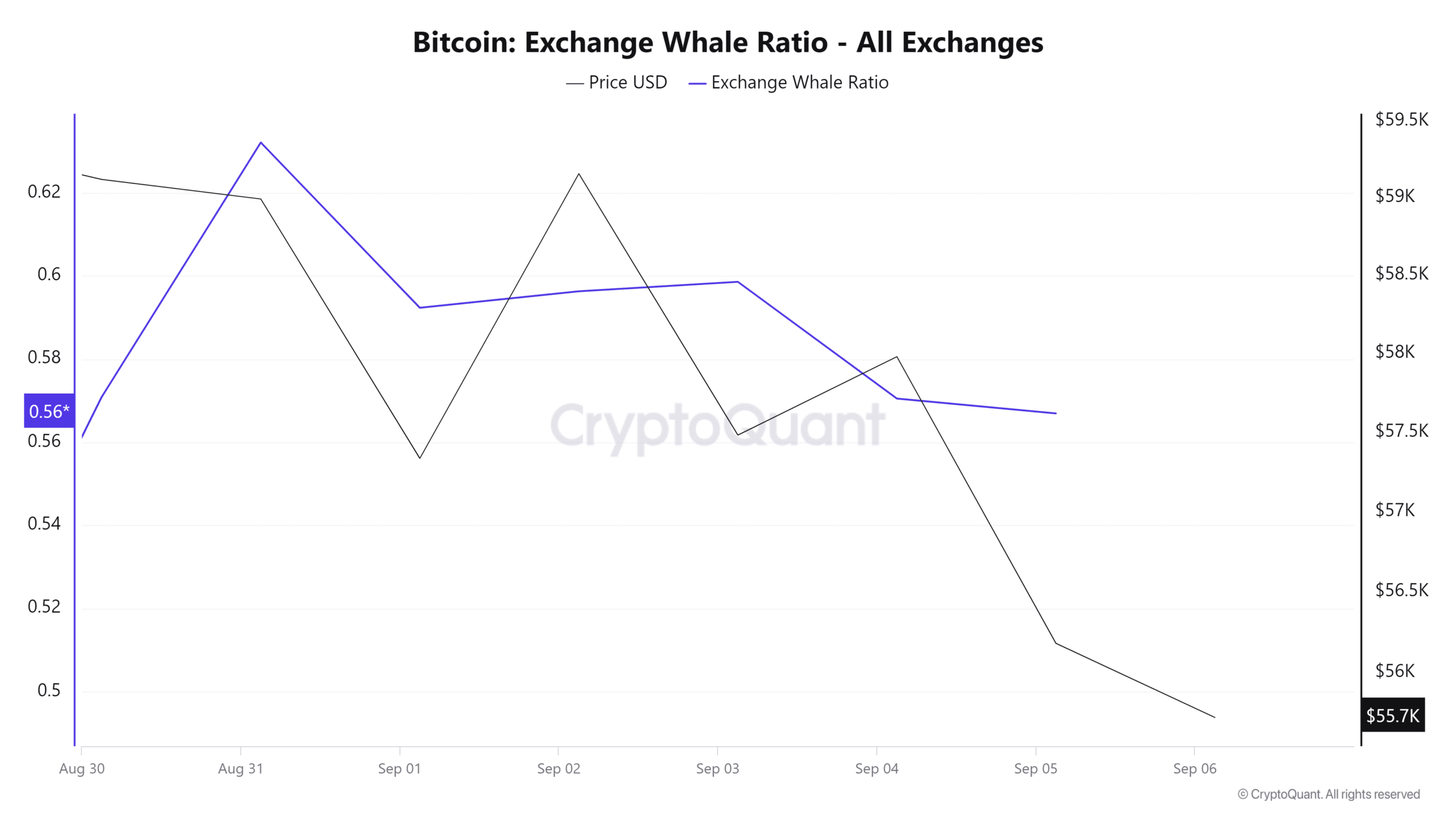- BTC was experiencing a strong downward momentum at press time, as BTC dropped by 2.45%.
- An analyst predicted a bearish reversal, based on two momentum indicators.
Bitcoin [BTC], the largest cryptocurrency, has experienced extreme volatility in 2024. The year has seen BTC surge to a record high of $73794 in March. Since then, however, it failed to maintain its momentum, hitting a low of $49K.
As of this writing, BTC was trading at $55774 after a 2.45% decline on daily charts. This drop continued a monthly long of decline. Over the past 30 days, it has dropped by 2%.
Therefore, the press time, market conditions raised questions about whether Bitcoin was on the verge of further decline.
Inasmuch, CryptoQuant analyst Yansei Dent suggested BTC was experiencing a bearish reversal, citing MVRV and Active Address.
Market sentiment
In an X (formerly Twitter) post, the analyst marked that applying moving averages on MVRV and active address revealed a death cross. Such a pattern was observed during the bearish reversal of the 2021 cycle.

Source: X
Based on this analysis, the 30DMA dropped below the 365DMA, indicating a slowdown in active addresses, which is a bearish signal for the near term. Reduced new and active addresses suggested less on-chain activity.
Further, the analysis showed that the 50DMA was trending downwards, although it was still below the 200DMA. However, if 50DMA falls below 200DMA, it signaled a bearish trend.
Therefore, both active address momentum (30DMA below 365DMA) and the possible convergence of the 50 DMA and 200 DMA suggested the market is entering a short-term bearish phase.
What Bitcoin’s chart indicates


Source: CryptoQuant
Adding to the fray, Bitcoin’s Net realized profit/loss has been negative over the last seven days. Generally, a negative NRPL showed that the market was experiencing a bearish phase, as investors sold at a loss.
When investors lack confidence in crypto’s future price movements, they tend to sell to reduce their losses.


Source: IntoTheBlock
Additionally, in the last seven days, four days saw negative large holders inflow. If large holders turn to transferring their assets to exchanges, it results in selling pressure.
Such action by whales may lead to a price decline, as it shows a lack of confidence in future prospects. This is another bearish signal, as large holders are anticipating lower prices or deciding to realize their current gains to avoid more losses.


Source: CryptoQuant
Finally, BTC’s whale exchange ratio remained at 50% on average over the past seven days. This showed that 50% of inflows into exchanges are arising from whale activity.
When whales move their assets to exchanges, it shows they are preparing to sell, which might result in selling pressure.
Read Bitcoin’s [BTC] Price Prediction 2024–2025
Therefore, as Yonsei Dent posited, the current market conditions showed potential further decline.
Therefore, if the prevailing market sentiments persist, BTC will drop to $50670. For a trend reversal, the bulls have to hold a $55k support region.

